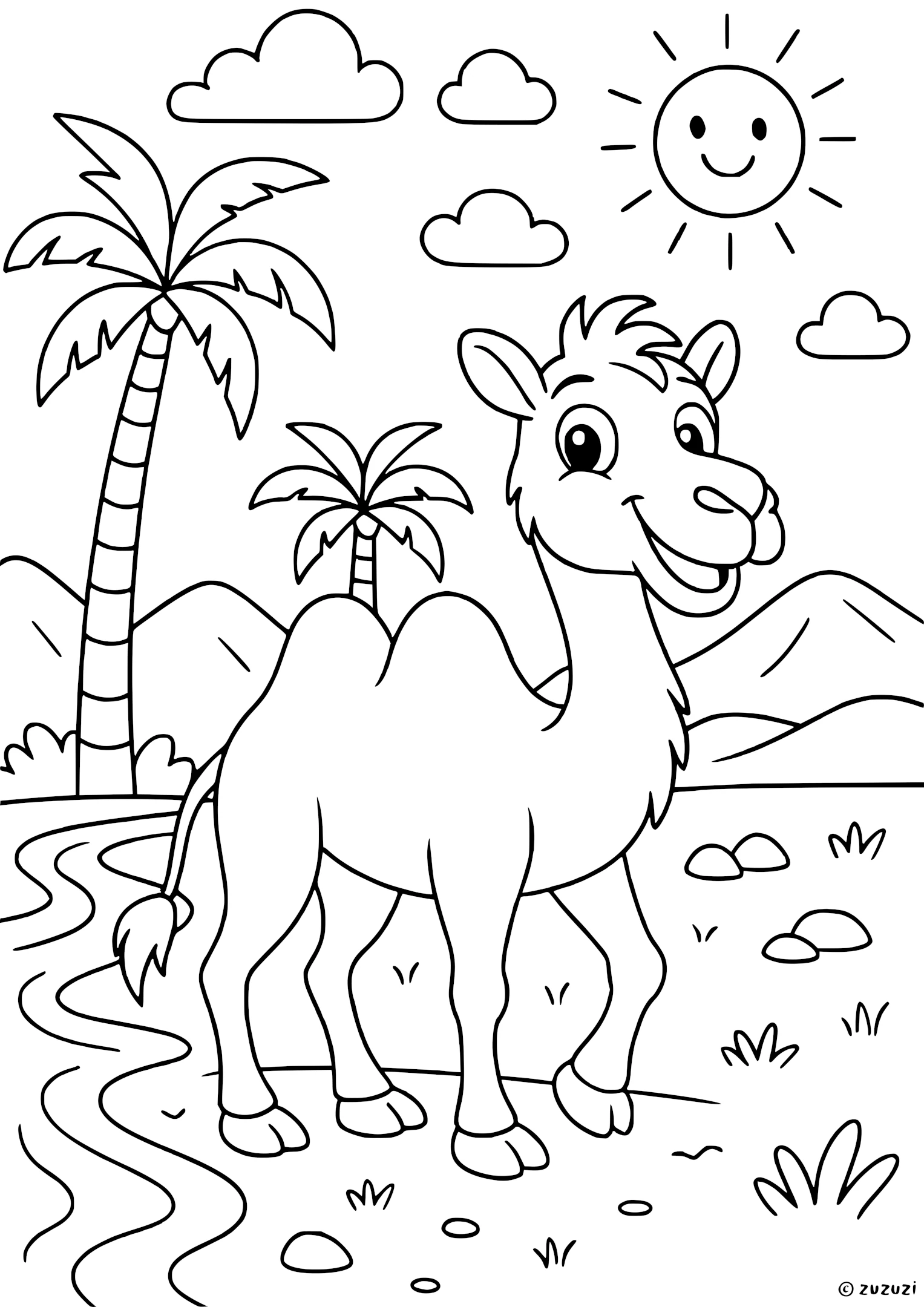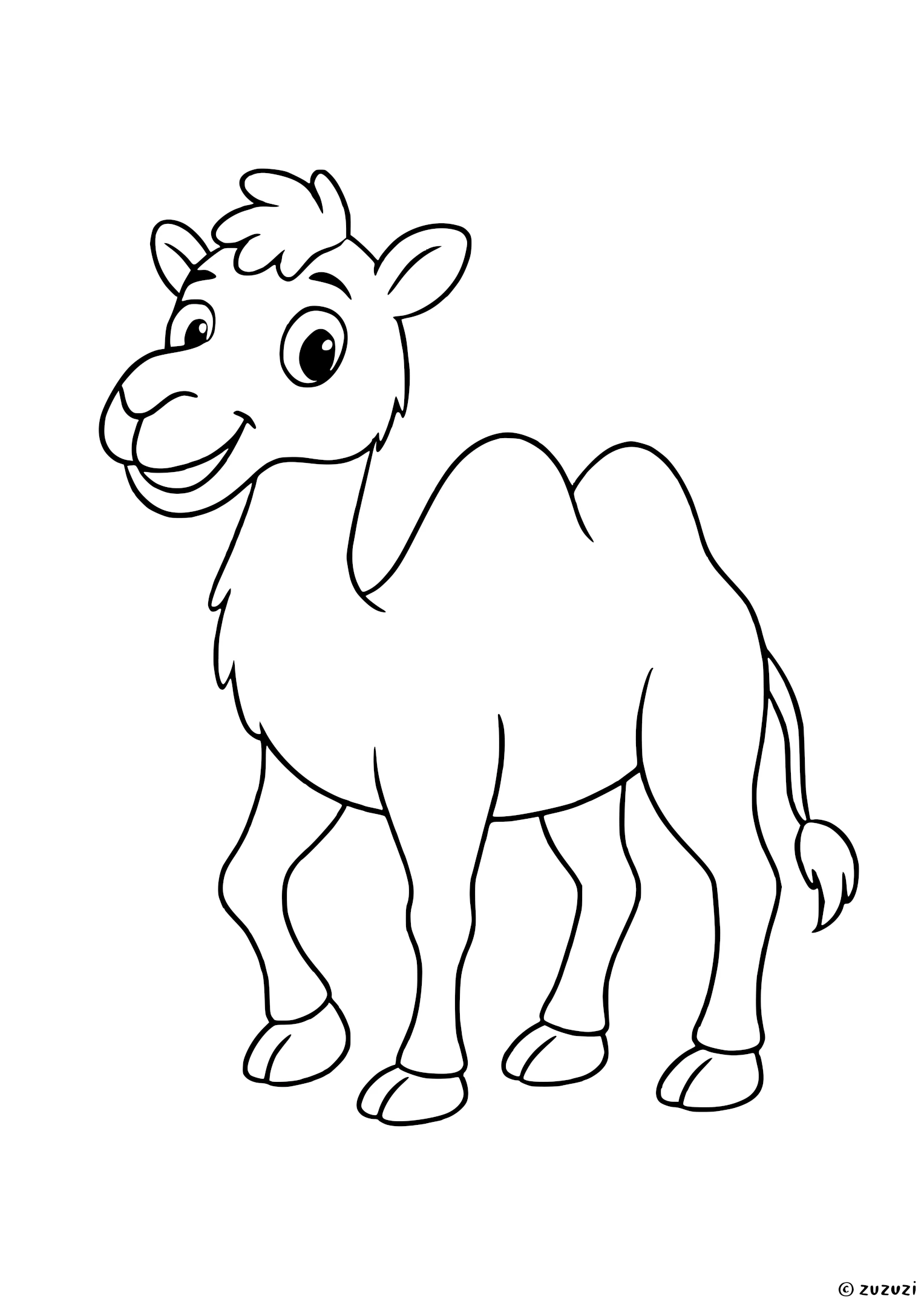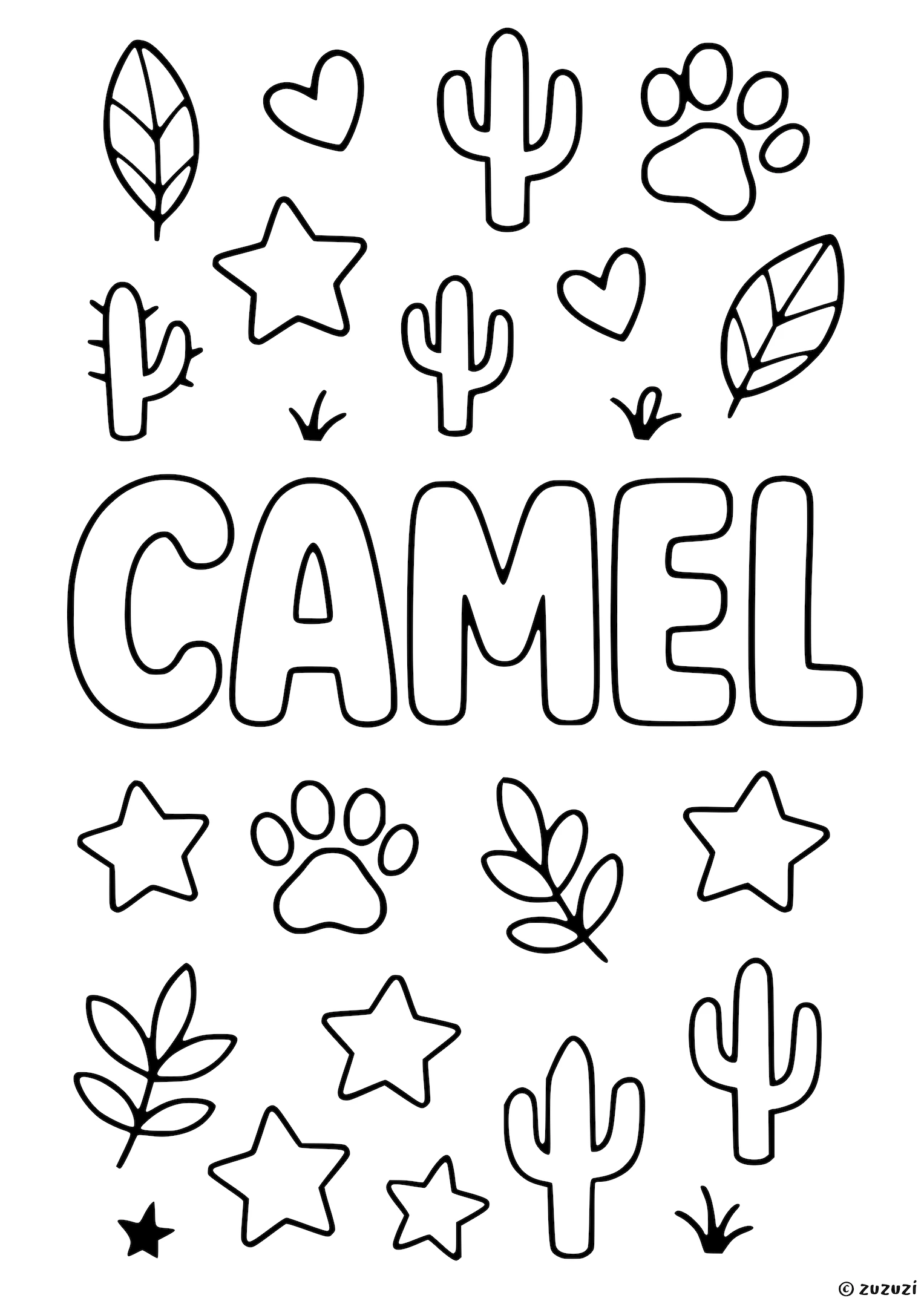Coloring ideas for Camel
Most camels have sandy colors like tan, beige, or light brown. You can color their fur in soft browns and use a darker brown or gray for their hooves and tail tip. Their humps can be the same color or a bit darker to show the shading. For the background, try golden yellow for the sand, light blue for the sky, and add some green if there are tiny desert plants! You could even color the sun with orange and yellow rays shining over the mountains.
On the back of the page, why not try writing some fun facts about the camel, or its name in different languages? You could even give it a name of your own, or draw your own version using your imagination!
What is a Camel?
Camels are amazing animals that live in hot, dry deserts. They are famous for the big humps on their backs, which store fat that helps them survive without food for a long time. Camels can go for days without water and can drink a lot at once when they find some. Their thick eyelashes and closing nostrils protect them from blowing sand. Most camels have one or two humps, and they can weigh up to 1,500 pounds (about 680 kilograms). Camels make grumbling sounds and sometimes groan or bellow. Their fur is thick but soft, helping them stay cool during the day and warm at night. These animals are gentle walkers and often carry people or supplies across the desert in groups called caravans.
How to say Camel in different languages?
- English: Camel
- French: Chameau
- Spanish: Camello
- Arabic: جمل
- German: Kamel
- Chinese: 骆驼
- Japanese: ラクダ
- Korean: 낙타
- Portuguese: Camelo
- Italian: Cammello
- Hindi: ऊंट
- Russian: Верблюд
- Turkish: Deve


